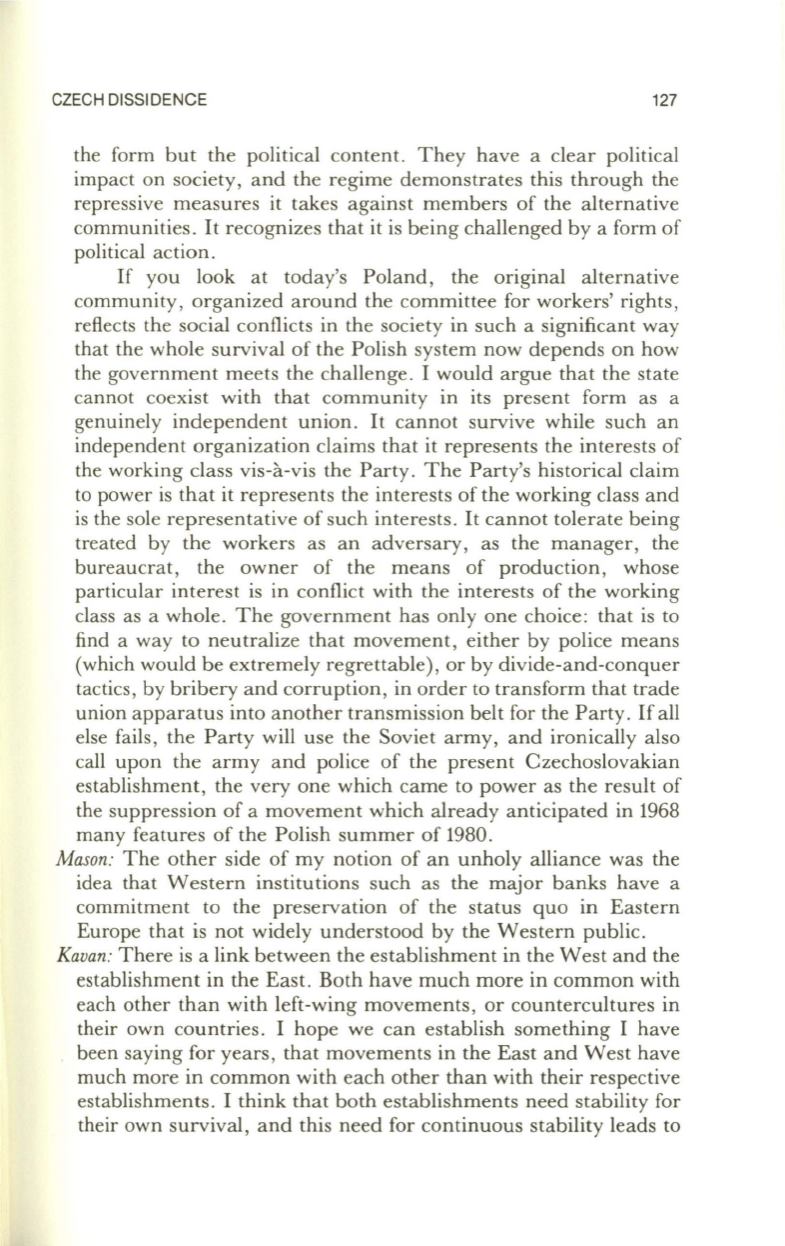
CZECH DISSIDENCE
127
the form but the political content. They have a clear political
impact on society, and the regime demonstrates this through the
repressive measures it takes against members of the alternative
communities. It recognizes that it is being challenged by a form of
political action .
If
you look at today's Poland, the original alternative
community, organized around the committee for workers' rights,
reflects the social conflicts in the society in such a significant way
that the whole survival of the Polish system now depends on how
the government meets the challenge. I would argue that the state
cannot coexist with that community in its present form as a
genuinely independent union. It cannot survive while such an
independent organization claims that it represents the interests of
the working class vis-a-vis the Party. The Party's historical claim
to power is that it represents the interests of the working class and
is the sole representative of such interests.
It
cannot tolerate being
treated by the workers as an adversary, as the manager, the
bureaucrat, the owner of the means of production, whose
particular interest is in conflict with the interests of the working
class as a whole. The government has only one choice: that is to
find a way to neutralize that movement, either by police means
(which would be extremely regrettable), or by divide-and-conquer
tactics, by bribery and corruption, in order to transform that trade
union apparatus into another transmission belt for the Party.
If
all
else fails, the Party will use the Soviet army, and ironically also
call upon the army and police of the present Czechoslovakian
establishment, the very one which came to power as the result of
the suppression of a movement which already anticipated in 1968
many features of the Polish summer of 1980.
Mason:
The other side of my notion of an unholy alliance was the
idea that Western institutions such as the major banks have a
commitment to the preservation of the status quo in Eastern
Europe that is not widely understood by the Western public.
Kavan:
There is a link between the establishment in the West and the
establishment in the East. Both have much more in common with
each other than with left-wing movements, or countercultures in
their own countries. I hope we can establish something I have
been saying for years, that movements in the East and West have
much more in common with each other than with their respective
establishments. I think that both establishments need stability for
their own survival, and this need for continuous stability leads to


